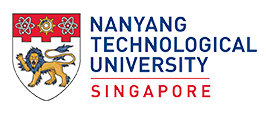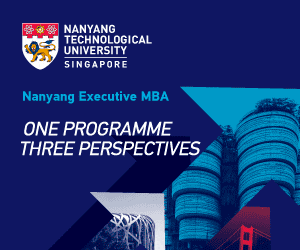
Introducing The MSc Actuarial Science And Risk Analytics: A Future-Ready Degree For Tomorrow’s Risks
Graduate Studies Blog

MSc ACTUARIAL AND RISK ANALYTICS
Introducing The MSc Actuarial Science And Risk Analytics: A Future-Ready Degree For Tomorrow’s Risks
We hear it all the time: our world is becoming more complex and uncertain. Beyond the traditional risks that people have been managing in the past, such as those tied to insurance, pensions, or market fluctuations—the landscape of risk has dramatically evolved. New technologies like artificial intelligence (AI) open the door to risks that must be thoughtfully managed, from cyber threats to privacy issues. Global warming is driving extreme weather events, making it vital to protect people and infrastructure from climate risks.
In a world of complexity, professionals who can measure and manage risk are in hot demand across every industry. Actuaries are key players in this space, using actuarial science to quantify and control future risks.
That’s why Nanyang Business School (NBS) is launching a new master’s programme: the MSc in Actuarial Science and Risk Analytics (MARA). Designed to prepare professionals for tomorrow’s risks, this interdisciplinary programme combines actuarial fundamentals with practical risk analytic skills. But first things first: what do actuaries actually do?
What is actuarial science, and what does an actuary do?
Actuarial science draws on mathematics, statistics, and financial analysis to calculate the likelihood of an event happening and what financial impact it might have.
Traditionally, it’s used in insurance and pension planning to help companies design policies and products. By analysing the mortality rates of people of a certain age, for example, an insurance company can estimate when it will need to pay out a life insurance policy and allocate funds accordingly.
In the past, actuaries were often thought to be limited to these fields – but this has not been the case. Dr Nie Ciyu, Academic Director of MARA at NBS and a qualified actuary from the Institute of Actuaries of Australia, shares that actuaries’ risk management and analytical skills make them valuable in any organisation that deals with risk.
“Today, actuaries are involved in strategic decisions across finance, healthcare, sustainability, and even high technology,” she says.
Actuaries have a core foundation in quantitative skills like statistical modelling, which overlap with other disciplines like financial engineering and business analytics. What sets actuaries’ work apart is their unique knowledge in risk management.
“The difference lies in how actuaries apply these skill sets to tackle risk,” explains Dr Nie. “Business analysts use similar skills to enhance business operations, and finance professionals may use them to analyse financial markets. But we have a special focus on preparing for future risks, whether it’s AI risk or financial risk.”
The MSc Actuarial Science and Risk Analytics: An interdisciplinary programme for a complex world
As new risks emerge, actuaries need new tools and skills to take them on effectively. NBS has designed the MARA programme to go beyond a conventional actuarial syllabus, with an interdisciplinary curriculum that prepares participants for a changing landscape.
“Think about the pandemic, climate change, cyber attacks, and more. The risks we face today have become more and more complex,” Dr Nie shares. “We’ve created MARA in response to the growing need for actuarial professionals who can think beyond traditional models.”
The curriculum integrates strong actuarial fundamentals with cutting-edge training in data science and risk analytics. Participants can also choose to focus on certain specialisations, such as climate risk management and financial risk management. Not only does this help participants develop innovative solutions to complex risks, it also opens up more career paths.
The modules are deeply industry-driven, with real-world projects that give participants a hands-on understanding of industry problems. “We’ll collaborate with industry partners to bring real business challenges into the classroom, including key trends like AI risk management,” Dr Nie reveals.
These strong ties to industry partners also mean that networking opportunities are built right into the MARA experience. “We’ll have guest lectures from industry professionals, who can share their work experiences and tips to progress in your future career path,” she adds.
A clear pathway to professional accreditation
After earning a degree, many actuaries go on to pursue further certifications – sharpening their competitive edge and opening doors to specialised roles. The MARA programme delivers on academic depth and rigour, giving graduates a smooth path to global professional qualifications.
“Our curriculum aligns closely with the curricula of leading actuarial bodies, such as the Institute and Faculty of Actuaries (IFOA) and the Society of Actuaries (SOA),” Dr Nie explains. “We’re also designing the risk analytics modules in line with professional exams by the Global Association of Risk Professionals (GARP), such as the Financial Risk Management (FRM) certification and the Sustainability & Climate Risk (SCR) certification.”
Right now, the school is in talks with these actuarial bodies to gain accreditation for the MARA programme. NBS’s undergraduate programme for actuarial science is accredited by the IFoA for over twenty years – the only one in Singapore to gain such prestigious recognition. With accreditation, graduates can potentially benefit from exemptions for the IFoA or SOA’s associateship examinations, helping them earn career-ready credentials faster.
“We’re still building up to accreditation, but we’re confident that we can demonstrate the high quality of our training,” shares Dr Nie. “We’ll also provide strong support for our students’ exam journeys through workshops, academic guidance, and connections to certified professionals.”
With a MARA degree in hand, graduates will be poised to stand out to employers – both in Singapore and globally.
Thinking critically, working collaboratively
For those ready to step into the unique world of actuarial science, what kind of learning experience will the MARA programme offer? Dr Nie sums it up in three words: interactive, challenging, and fast-paced.
“You’ll be challenged to think critically and creatively about problems that are important to society,” she says. “But the faculty here is highly supportive, and you’ll collaborate closely with your course mates and mentors on various projects.”
Class sizes will be kept small to give each participant personalised support. Every student can tap into mentorship from the faculty, who are fully certified actuaries with deep expertise in risk analytics and climate risk management.
In this collaborative environment, it’s important that participants are comfortable not only working with numbers – but also with others.
“You should be good with numbers, although I wouldn’t say you have to be a mathematician,” Dr Nie explains. “At the same time, you need to be curious and collaborative, because actuaries don’t work in isolation. We want our students to be skilled at team work and willing to push boundaries.”
By the end of the programme, MARA participants can expect to grow into curious and cooperative problem-solvers – ready to navigate a new era of risk.
Ready to take on the future of risk? Learn more about the MSc Actuarial Science and Risk Analytics programme here.

















